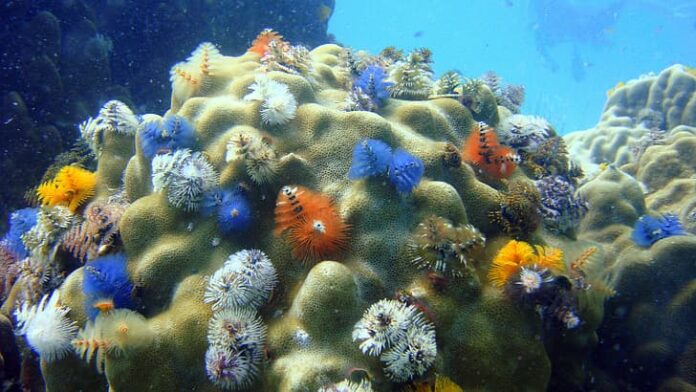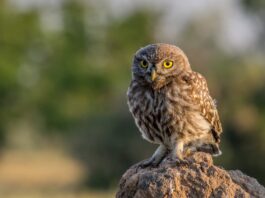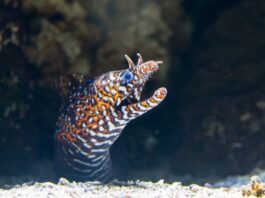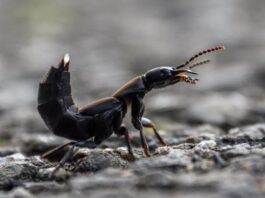Bristle worm is an aquatic worm that has unique appearance, and some are rather a little uncomfortable to look at. There are more than 10,000 bristle worm species, and many of them are great for tanks. When it comes to bristle worms, we have the normal ones and the dangerous ones. I am bringing both to discuss today, and all of them all have a strange-looking appearance. You will find 4 of them below, let me know you find the most interesting.
1Bearded Fireworm
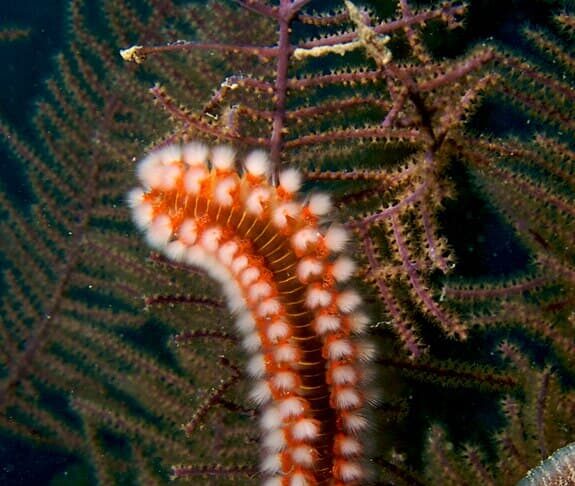
Scientific Name: Hermodice Carunculata
Looking like a centipede, a bearded fireworm is 15 centimeters on average but some can grow up to 30 centimeters long. It has an elongated and flattened body with multiple segments, and it is greenish to reddish or yellowish in color. There are around 60 to 150 segments, and each segment has a pair of parapodia and clusters of stinging white bristles. The bristles are hollow and they will break off once it makes contact with the predators. Though not aggressive, these fireworms can still hurt careless swimmers who accidentally touch them while swimming. When flared, the bristles can penetrate human skin, injecting a powerful neurotoxin and causing intense irritation and a painful burning sensation. The symptoms may also include dizziness and nausea which can last up to a few hours.
This bristle worm species lives throughout the tropical coastal waters of the Atlantic Ocean, living in various environments. They inhabit corals, mud, posidonia, rocks, sand, and on drifting wood from the surface to 40 meters deep. The bearded fireworms are abundant on the reefs, usually beneath stones in rocky or seagrass or muddy bottoms. Slow but fierce, these bristle worms can hunt pretty much anything they want to eat. They feed on anemones, hard and soft corals, plant matter, and small crustaceans like clams, mussels, and shrimps.
2Christmas Tree Worm
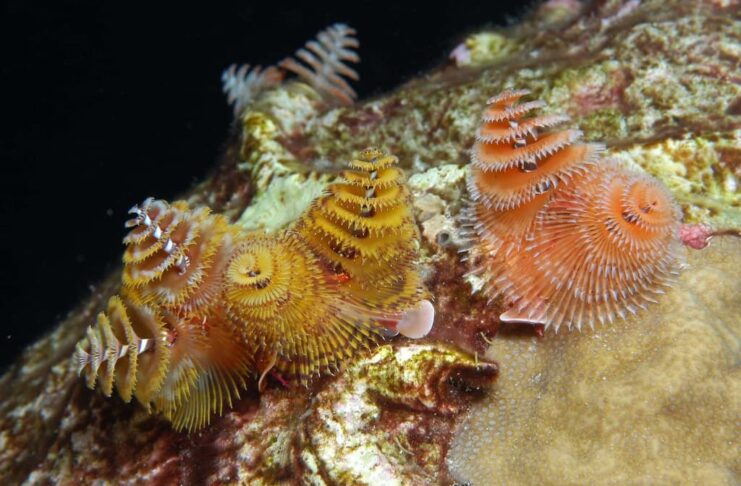
Scientific Name: Spirobranchus Giganteus
Isn’t this a lively bristle worm species to look at? Just like the name suggests, a Christmas tree worm looks just like a Christmas tree. An average Christmas tree worm is around 3.8 centimeters long, and every single one of them has distinctive shapes and colors. Those spiral structures are very eye-catching; hence the name, and each worm has two crowns or Christmas trees. The crowns are always in the same color and they protrude from its tube-like body, and these crowns are composed of radioles. Some of the most common colors are blue, orange, red, white, and yellow while brown and pink ones exist too. The radioles are hair-like appendages that radiate from the worm’s central spine. This worm uses these appendages for respiration and catching food such as microscopic plants or phytoplankton.
Christmas tree worms are marine worms that live in tropical coral reefs around the world, mostly from the Caribbean to the Indo-Pacific. Another cool thing about them is that they are sedentary, meaning they won’t move much once they find a spot that they like. However, some of them are quite picky when it comes to choosing where to live. The larger ones often choose a specific coral species but the small ones will settle for artificial substrates. These worms anchor most of their bodies in burrows leaving the colorful crowns visible. When startled, they will rapidly retract into their burrows to hide from predators like crabs, reef fish, sea urchins, and shrimps. Once the coast is clear, they will re-emerge and continue being pretty again.
3Pompeii Worm
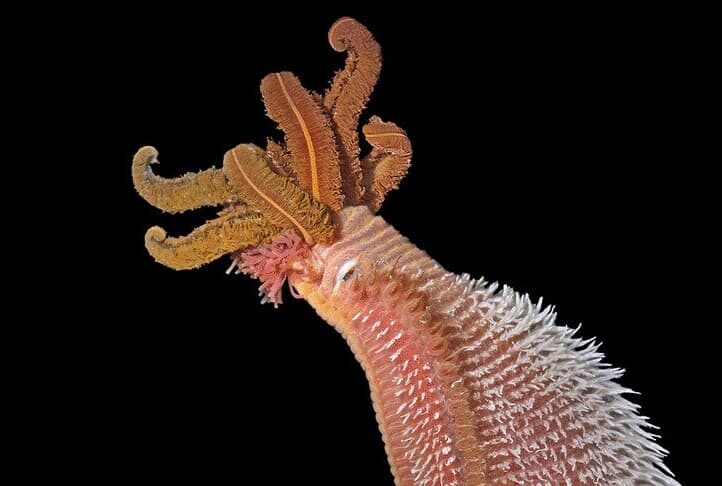
Scientific Name: Alvinella Pompejana
Let’s begin with the basics before we talk about how cool this bristle worm species is. A Pompeii worm can reach a length of around 13 centimeters, and it is pretty easy to recognize. It has a pale gray body with red tentacle-like gills on its head. Looks like a hairy back but those hairs are actually colonies of bacteria that feed on the worm’s mucus. And as for the worms themselves, they feed exclusively on chemosynthetic bacteria.
The Pompeii worm is one of the most heat-tolerant animals on Earth, and it is very impressive. Pompeii worms live at hydrothermal vents which are geysers on the seafloor that spew super hot mineral-rich water. Its tail end is often resting in temperatures as high as 80 degrees Celsius which is quite scalding. And at the same time, its head sticks out of its tube into water which is around 22 degrees Celsius. Speaking of balancing, right? That is not all, their environments are full of lethal chemicals such as cadmium, copper, lead, and zinc. Must be tough to resist such toxic environments, right? Thanks to the symbiotic bacteria residing on the worm’s back, the water is more habitable due to the bacteria’s detoxification.
4Rag Worm
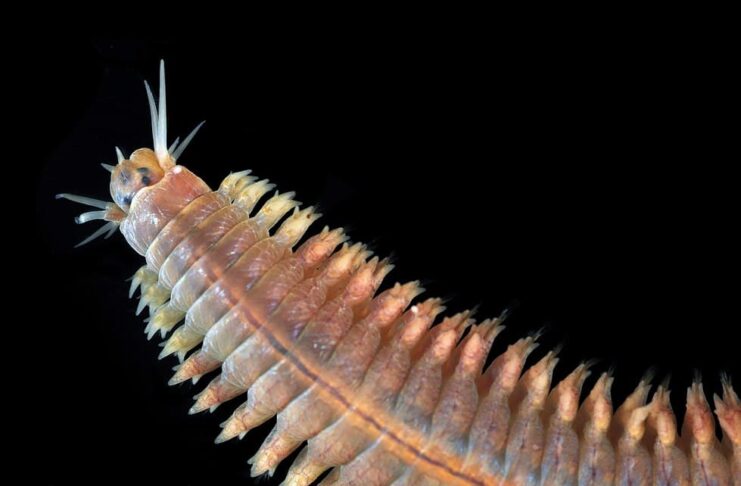
Scientific Name: Hediste Diversicolor
A ragworm is a common bristle worm species, and it has an average size of 6 to 12 centimeters. Despite the short body, a ragworm’s body is highly segmented which makes it look like a millipede. A ragworm whose body is 12 centimeters can have up to over 200 segments. On top of that, each segment has a pair of limbs called parapodia which sport its bristles. Rag worms are usually pale brown but males become bright green during the breeding season. Their size makes them very common as sea fishing baits, even the smallest ones are useful in targeting fish. More than that, they are very durable and tough even after being pierced with a hook and reeled back in. They never stop wiggling, and that makes them a perfect bait for fishing.
Rag worms live in coastal and marine waters. These worms like to burrow in muddy seabeds but it is also not uncommon to see them under rocks near their burrows. They will feed on anything with the help from a pair of hard pincer-like jaws that they have. These jaws bless them with the ability to grab living prey and slice through carrion or plant material with ease. What’s so fascinating about these bristle worm species is their ability to set traps. A ragworm can cast a net of mucous around its burrow entrance which traps water rich in plankton and other organic material. Then it undulates its body and fans its parapodia to draw a current of water down its lair. Once it collects enough, it rolls up its nutritious carpet of mucous and food and then swallows everything.
Related Post: Bobbitt Worm Facts

